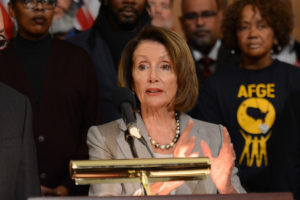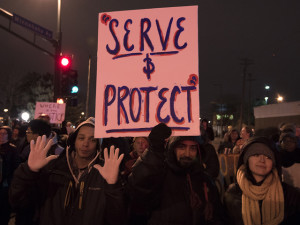The tragic killings of children in Newtown, Connecticut seem to have set off a noisy political debate over gun laws, perhaps more than previous mass shootings such as those in Aurora, Colorado and Tucson, Arizona. However, many of the arguments are likely to fall along the same lines as always, which could lead to the usual gridlock and inaction. To break this gridlock, advocates for stronger gun laws might benefit from two frames long used by conservatives:
1. “Law and Order”
Conservatives (and the Republican Party that they dominate) have long tried to claim the mantle of the party of “law and order.” Then-candidate Richard M. Nixon successfully ran for and won the Presidentcy on a “law and order” platform in 1968, as America was being roiled by anti-Vietnam War protests and the killings of Martin Luther King and Robert Kennedy. The death toll from the mass shootings of recent years far exceeds that of the events of 1968, thus we have more of a “law and order” problem today.
Likewise, the flip side of “law and order” is the charge that Republicans leveled against Democrats for years, i.e., that they were “soft on crime.” Also, note that being for “law and order” precisely fits framing guru George Lakoff‘s “strict father” paradigm which dominates among conservatives and Republicans, and which includes adherence to the “rule of law.” The “soft on crime” charge can be leveled against conservatives who fail to support reasonable steps to reduce gun crimes and maintain “law and order” in our streets and our schools.
Those who want to advocate for sensible gun laws (e.g., reinstating the Assault Weapons Ban, closing the “gun show loophole,” and establishing an effective database to prevent persons who have been ruled mentally incompetent from purchasing guns) are usually thought of as liberal. The “law and order” approach can turn this stereotype on its head, and maybe even attract a few conservatives or independents to the cause.
2. “Right to Life”
The Declaration of Independence contains the famous phrase: “Life, Liberty and the pursuit of Happiness.” Likewise, the Constitution contains references to the right to life. Conservatives have glommed onto the “right to life” phrase to push for the outlawing of abortion. They strongly stand for the right to life — of fetuses. Once those fetuses are born, not so much.
However, advocates for sensible gun laws can argue for such laws based on the “right to life” of children and other would-be victims of mass shooters. This is especially apparent in a case like Newtown, where such a large portion of those killed were small children, gunned down in their classrooms. If you make the argument that these kids and their teachers and principals had a “right to life” or even a right to “freedom” — another favorite conservative word — from crazed gunmen with easy access to military-style assault weapons, the good Christians and other conservatives who advocate for the “right to life” of fetuses could have a hard time explaining why kids who were fetuses just a few years earlier don’t deserve the same protections.
Based on the lack of results on gun control over the past decade under the traditional approach, there’s no harm in giving these arguments a try and reporting back here as to what kind of reaction you receive.










